Ejaz Ahmed
DeepMPR: Enhancing Opportunistic Routing in Wireless Networks through Multi-Agent Deep Reinforcement Learning
Jun 16, 2023Abstract:Opportunistic routing relies on the broadcast capability of wireless networks. It brings higher reliability and robustness in highly dynamic and/or severe environments such as mobile or vehicular ad-hoc networks (MANETs/VANETs). To reduce the cost of broadcast, multicast routing schemes use the connected dominating set (CDS) or multi-point relaying (MPR) set to decrease the network overhead and hence, their selection algorithms are critical. Common MPR selection algorithms are heuristic, rely on coordination between nodes, need high computational power for large networks, and are difficult to tune for network uncertainties. In this paper, we use multi-agent deep reinforcement learning to design a novel MPR multicast routing technique, DeepMPR, which is outperforming the OLSR MPR selection algorithm while it does not require MPR announcement messages from the neighbors. Our evaluation results demonstrate the performance gains of our trained DeepMPR multicast forwarding policy compared to other popular techniques.
Open Source-based Over-The-Air 5G New Radio Sidelink Testbed
Jun 15, 2023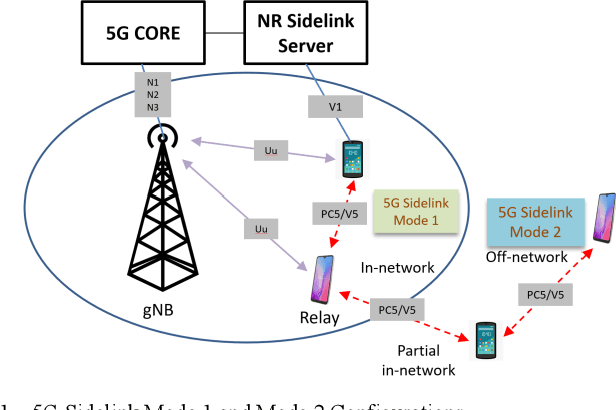
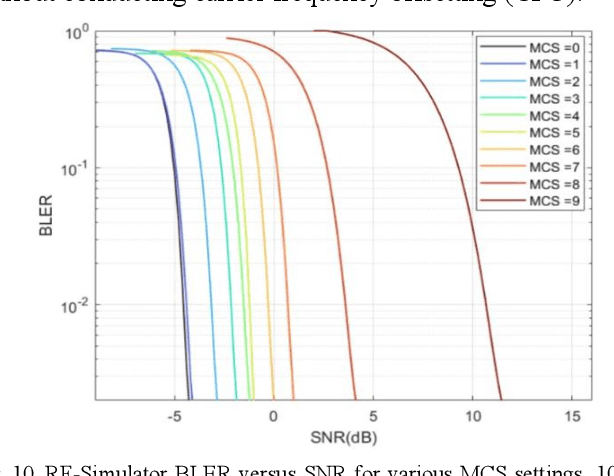
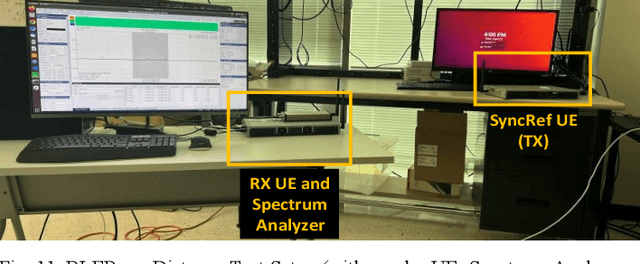
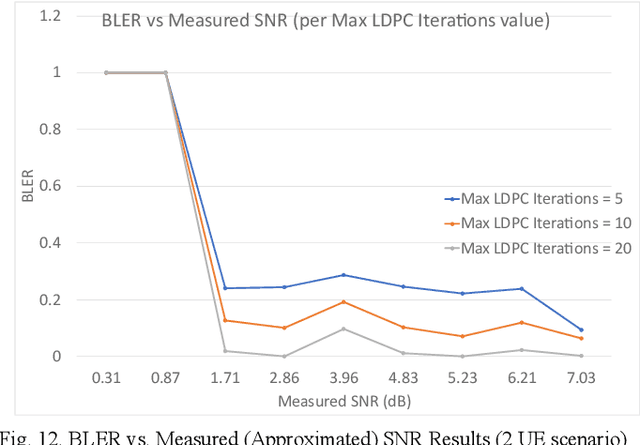
Abstract:The focus of this paper is the prototype development for 5G new radio (NR) sidelink communications, which enables NR UEs to transfer data independently without the assistance of a base station (gNB), designated as sidelink mode 2. Our design leverages open-source software operating on software-defined radios (SDRs), which can be easily extended for multiple UE scenarios. The software includes all signal processing components specified by 5G sidelink standards, including Low -Density Parity Check (LDPC) encoding/decoding, polar encoding/decoding, data and control multiplexing, modulation/demodulation, and orthogonal frequency-division multiplexing (OFDM) modulation/demodulation. It can be configured to operate with different bands, bandwidths, and multiple antenna settings. One method to demonstrate the completed Physical Sidelink Broadcast Channel (PSBCH) development is to show synchronization between a SyncRef UE and a nearby UE. The SyncRef UE broadcasts a sidelink synchronization signal block (S-SSB) periodically, which the nearby UE detects and uses to synchronize its timing and frequency components with the SyncRef UE. Once a connection is established, the SyncRef UE acts as a transmitter and shares data with the receiver UE (nearby UE) via the physical sidelink share channel (PSSCH). Our physical sidelink framework is tested using both an RF simulator and an over-the-air (OTA) testbed. In this work, we show both synchronization and data transmission/reception with 5G sidelink mode 2, where our OTA experimental results align well with our simulation results.
DeepCQ+: Robust and Scalable Routing with Multi-Agent Deep Reinforcement Learning for Highly Dynamic Networks
Nov 29, 2021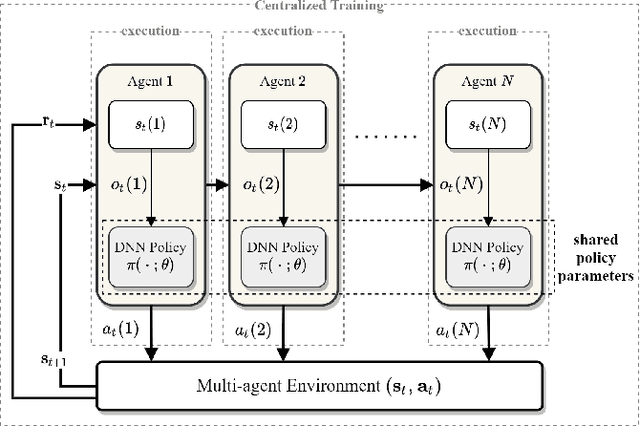
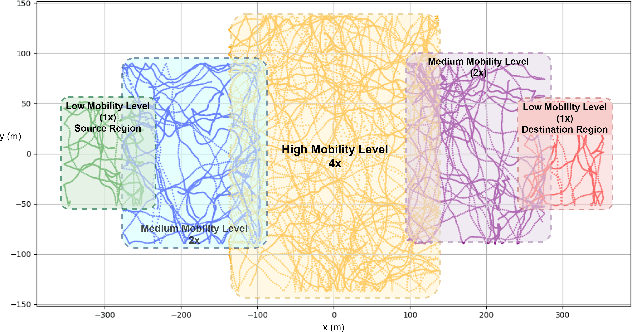
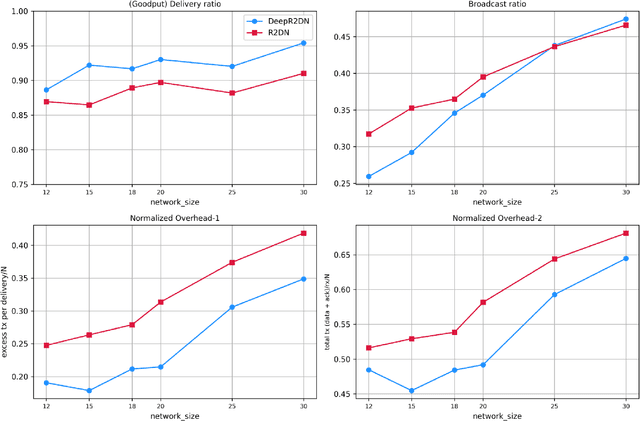

Abstract:Highly dynamic mobile ad-hoc networks (MANETs) remain as one of the most challenging environments to develop and deploy robust, efficient, and scalable routing protocols. In this paper, we present DeepCQ+ routing protocol which, in a novel manner integrates emerging multi-agent deep reinforcement learning (MADRL) techniques into existing Q-learning-based routing protocols and their variants and achieves persistently higher performance across a wide range of topology and mobility configurations. While keeping the overall protocol structure of the Q-learning-based routing protocols, DeepCQ+ replaces statically configured parameterized thresholds and hand-written rules with carefully designed MADRL agents such that no configuration of such parameters is required a priori. Extensive simulation shows that DeepCQ+ yields significantly increased end-to-end throughput with lower overhead and no apparent degradation of end-to-end delays (hop counts) compared to its Q-learning based counterparts. Qualitatively, and perhaps more significantly, DeepCQ+ maintains remarkably similar performance gains under many scenarios that it was not trained for in terms of network sizes, mobility conditions, and traffic dynamics. To the best of our knowledge, this is the first successful application of the MADRL framework for the MANET routing problem that demonstrates a high degree of scalability and robustness even under environments that are outside the trained range of scenarios. This implies that our MARL-based DeepCQ+ design solution significantly improves the performance of Q-learning based CQ+ baseline approach for comparison and increases its practicality and explainability because the real-world MANET environment will likely vary outside the trained range of MANET scenarios. Additional techniques to further increase the gains in performance and scalability are discussed.
Characterizing Malicious URL Campaigns
Aug 29, 2021
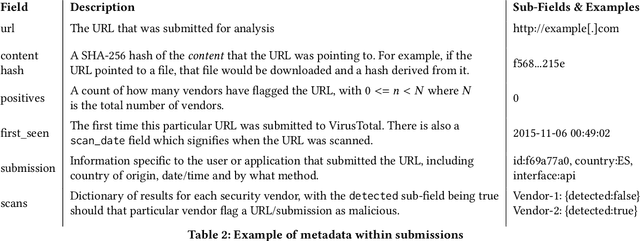
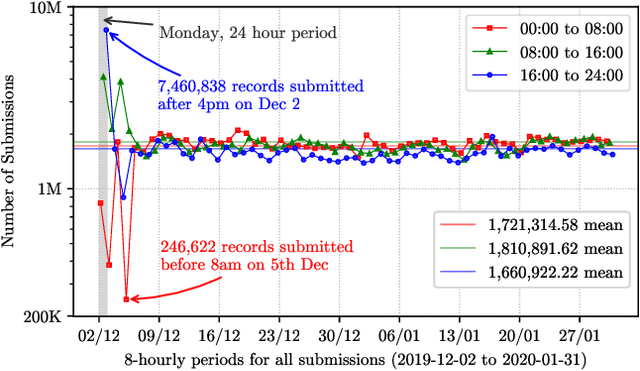
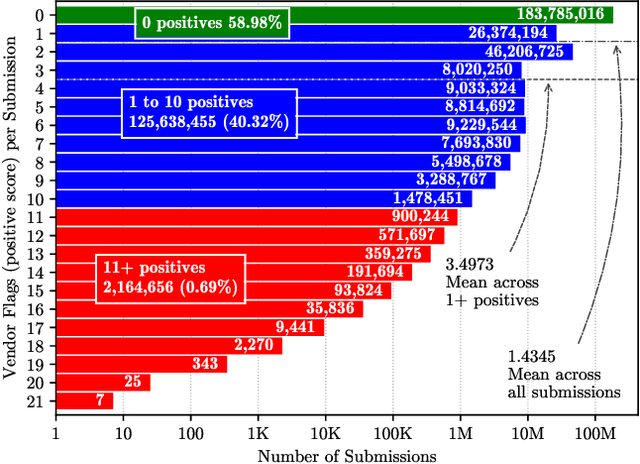
Abstract:URLs are central to a myriad of cyber-security threats, from phishing to the distribution of malware. Their inherent ease of use and familiarity is continuously abused by attackers to evade defences and deceive end-users. Seemingly dissimilar URLs are being used in an organized way to perform phishing attacks and distribute malware. We refer to such behaviours as campaigns, with the hypothesis being that attacks are often coordinated to maximize success rates and develop evasion tactics. The aim is to gain better insights into campaigns, bolster our grasp of their characteristics, and thus aid the community devise more robust solutions. To this end, we performed extensive research and analysis into 311M records containing 77M unique real-world URLs that were submitted to VirusTotal from Dec 2019 to Jan 2020. From this dataset, 2.6M suspicious campaigns were identified based on their attached metadata, of which 77,810 were doubly verified as malicious. Using the 38.1M records and 9.9M URLs within these malicious campaigns, we provide varied insights such as their targeted victim brands as well as URL sizes and heterogeneity. Some surprising findings were observed, such as detection rates falling to just 13.27% for campaigns that employ more than 100 unique URLs. The paper concludes with several case-studies that illustrate the common malicious techniques employed by attackers to imperil users and circumvent defences.
Robust and Scalable Routing with Multi-Agent Deep Reinforcement Learning for MANETs
Jan 09, 2021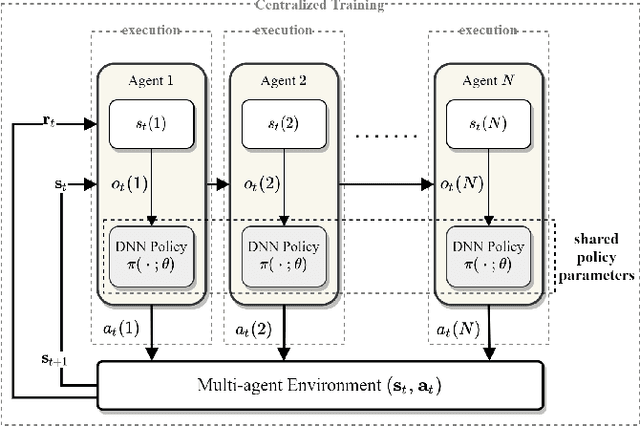
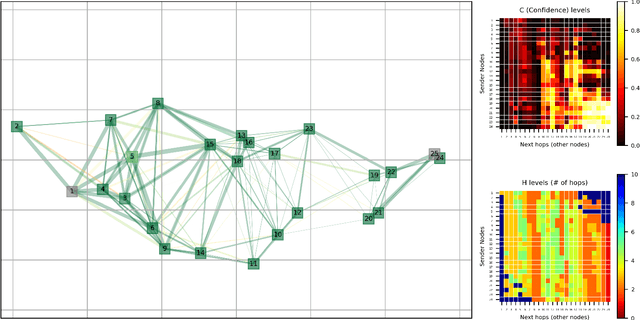
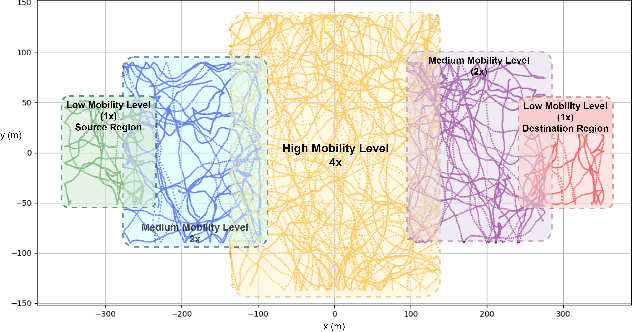
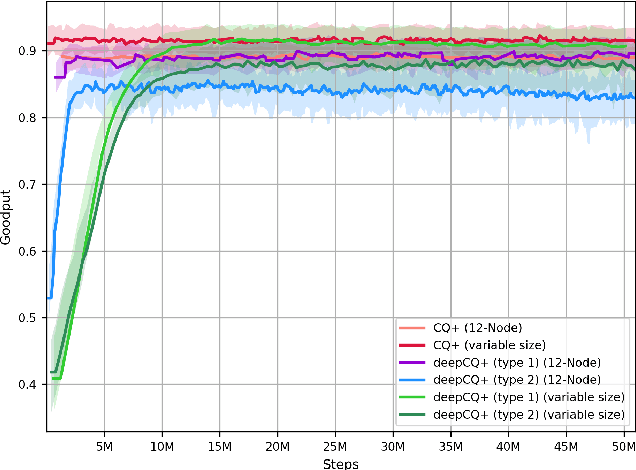
Abstract:We address the packet routing problem in highly dynamic mobile ad-hoc networks (MANETs). In the network routing problem each router chooses the next-hop(s) of each packet to deliver the packet to a destination with lower delay, higher reliability, and less overhead in the network. In this paper, we present a novel framework and routing policies, DeepCQ+ routing, using multi-agent deep reinforcement learning (MADRL) which is designed to be robust and scalable for MANETs. Unlike other deep reinforcement learning (DRL)-based routing solutions in the literature, our approach has enabled us to train over a limited range of network parameters and conditions, but achieve realistic routing policies for a much wider range of conditions including a variable number of nodes, different data flows with varying data rates and source/destination pairs, diverse mobility levels, and other dynamic topology of networks. We demonstrate the scalability, robustness, and performance enhancements obtained by DeepCQ+ routing over a recently proposed model-free and non-neural robust and reliable routing technique (i.e. CQ+ routing). DeepCQ+ routing outperforms non-DRL-based CQ+ routing in terms of overhead while maintains same goodput rate. Under a wide range of network sizes and mobility conditions, we have observed the reduction in normalized overhead of 10-15%, indicating that the DeepCQ+ routing policy delivers more packets end-to-end with less overhead used. To the best of our knowledge, this is the first successful application of MADRL for the MANET routing problem that simultaneously achieves scalability and robustness under dynamic conditions while outperforming its non-neural counterpart. More importantly, we provide a framework to design scalable and robust routing policy with any desired network performance metric of interest.
 Add to Chrome
Add to Chrome Add to Firefox
Add to Firefox Add to Edge
Add to Edge